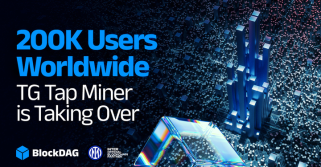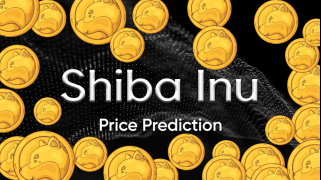
Significance of a block reward in cryptocurrency
仮想通貨におけるブロック報酬の意義
A block reward is a crucial component that supports the decentralized nature of cryptocurrencies and has great symbolic and functional importance.
ブロック報酬は、暗号通貨の分散型の性質をサポートする重要なコンポーネントであり、象徴的かつ機能的に非常に重要です。
Fundamentally, a block reward is the payment made to crypto miners for adding authorized transactions to the network. This process, known as mining, involves completing challenging mathematical puzzles, adding computing power to the network and preserving the distributed ledger’s integrity.
基本的に、ブロック報酬は、承認されたトランザクションをネットワークに追加するために暗号通貨マイナーに支払われる支払いです。マイニングとして知られるこのプロセスには、難しい数学パズルを完成させ、ネットワークにコンピューティング能力を追加し、分散台帳の整合性を維持することが含まれます。
The importance of a block reward lies in the fact that it serves as the primary source of incentive for miners, creating a competitive atmosphere that protects the security and stability of the network as a whole. In addition to compensating miners for their computing efforts, it is essential to create new coins and efficiently manage cryptocurrency distribution and circulation. This dual role supports the overall supply and demand dynamics of the digital currency along with maintaining an incentive structure for miners.
ブロック報酬の重要性は、それがマイナーの主なインセンティブ源として機能し、ネットワーク全体のセキュリティと安定性を保護する競争的な雰囲気を生み出すという事実にあります。マイナーのコンピューティング作業に対する補償に加えて、新しいコインを作成し、暗号通貨の配布と流通を効率的に管理することが不可欠です。この二重の役割は、マイナーのインセンティブ構造を維持するとともに、デジタル通貨の全体的な需要と供給のダイナミクスをサポートします。
Furthermore, by eliminating the requirement for a central authority to control or issue currency, the block reward exemplifies the principle of decentralization. It creates an open, transparent, self-sustaining system where users are compensated for their efforts, enhancing the ecosystem’s innovative and democratic features.
さらに、通貨を管理または発行するための中央当局の要件を排除することにより、ブロック報酬は分散化の原則を例示します。これにより、ユーザーが努力に見合った報酬を得る、オープンで透明な自立型システムが構築され、エコシステムの革新的で民主的な機能が強化されます。
Components of a block reward
ブロック報酬の構成要素
The mining reward and transaction fees are the two main parts of cryptocurrency block rewards, and they both serve as powerful incentives for miners.
マイニング報酬と取引手数料は、暗号通貨ブロック報酬の 2 つの主要な部分であり、どちらもマイナーにとって強力なインセンティブとして機能します。
The predetermined amount of newly minted coins is known as the mining reward, and it is often awarded to miners in exchange for successfully adding a new block to the blockchain. This part acts as the incentive system for miners in addition to bringing new cryptocurrency into circulation.
新たに鋳造された所定の量のコインはマイニング報酬として知られており、多くの場合、ブロックチェーンへの新しいブロックの追加に成功したことと引き換えにマイナーに授与されます。この部分は、新しい暗号通貨を流通させるだけでなく、マイナーへのインセンティブ システムとしても機能します。
The second element is transaction fees, which are amounts users must pay to have their transactions included in a block. By encouraging miners to prioritize transactions with greater fees, this feature maximizes the blockchain’s efficiency.
2 番目の要素は取引手数料で、これはユーザーが自分の取引をブロックに含めるために支払わなければならない金額です。この機能は、マイナーがより高い手数料でトランザクションを優先することを奨励することで、ブロックチェーンの効率を最大化します。
The combination of mining rewards and transaction fees creates a robust incentive structure for miners, promoting network security, decentralization and transaction validation. Together, these elements provide the economic framework that keeps cryptocurrencies decentralized and in line with miners’ incentives for the general well-being and operation of the blockchain.
マイニング報酬と取引手数料の組み合わせにより、マイナーにとって強固なインセンティブ構造が形成され、ネットワークのセキュリティ、分散化、トランザクションの検証が促進されます。これらの要素が一体となって、仮想通貨の分散化を維持し、ブロックチェーンの全体的な健全性と運用に対するマイナーのインセンティブと一致する経済的枠組みを提供します。
How block rewards are calculated
ブロック報酬の計算方法
Cryptocurrency block rewards are determined by complex dynamics in which fixed and variable components are important.
暗号通貨ブロックの報酬は、固定要素と変動要素が重要である複雑な力学によって決定されます。
Some cryptocurrencies have fixed block rewards, where a set number of coins is issued for each block that is mined successfully. On the other hand, others employ variable rewards, which are frequently dependent on variables like network participation or computing difficulty. For example, the mining incentive for Bitcoin (BTC) is halved approximately every four years. This intentional scarcity, which is reminiscent of digital gold, functions to regulate the total supply. Similar to digital gold, this deliberate scarcity controls the total supply.
一部の暗号通貨には固定ブロック報酬があり、マイニングが成功したブロックごとに設定された数のコインが発行されます。一方で、ネットワークへの参加やコンピューティングの難易度などの変数に依存することが多い、変動報酬を採用する企業もいます。たとえば、ビットコイン (BTC) のマイニング インセンティブは、約 4 年ごとに半分になります。デジタルゴールドを彷彿とさせるこの意図的な希少性は、総供給量を調整するように機能します。デジタルゴールドと同様に、この意図的な希少性が総供給量を制御します。
Halving events have a significant impact on the crypto landscape because they can influence market dynamics and miner incentives. For instance, miners are forced to rely on transaction fees as the reward decreases, highlighting the growing importance of this variable component. Furthermore, mining incentives and difficulty have a mutually beneficial relationship. This is due to an algorithmic adjustment mechanism that keeps block creation times constant.
半減期イベントは市場力学やマイナーのインセンティブに影響を与える可能性があるため、暗号通貨の状況に大きな影響を与えます。たとえば、マイナーは報酬が減少するにつれて取引手数料に頼らざるを得なくなり、この変動要素の重要性が高まっていることが浮き彫りになっています。さらに、マイニングのインセンティブと難易度は相互に有益な関係にあります。これは、ブロックの作成時間を一定に保つアルゴリズム調整メカニズムによるものです。
The degree of difficulty varies dynamically with the amount of processing power (hash rate) used in the mining process. Maintaining the intended block generation time becomes increasingly challenging as more miners join the network and the hash rate rises. On the other hand, the difficulty will reduce as the hash rate drops.
難易度は、マイニング プロセスで使用される処理能力 (ハッシュ レート) の量に応じて動的に変化します。より多くのマイナーがネットワークに参加し、ハッシュレートが上昇するにつれて、意図したブロック生成時間を維持することはますます困難になります。一方、ハッシュレートが下がると難易度は下がります。
Rewards frequently adjust to balance the work necessary for a successful block validation as mining difficulty rises. This complex interaction between fixed and variable elements, halving occasions, and mining difficulty exemplifies the rigorous calculus behind determining block rewards in the ever-evolving world of cryptocurrencies.
マイニングの難易度が上がるにつれて、ブロック検証を成功させるために必要な作業のバランスをとるために報酬が頻繁に調整されます。固定要素と変動要素の間のこの複雑な相互作用、半減期、マイニングの難易度は、進化し続ける暗号通貨の世界でブロック報酬を決定する背後にある厳密な計算を例示しています。
Bitcoin’s block reward mechanism
ビットコインのブロック報酬メカニズム
Bitcoin’s block reward systems have been pivotal in the development of the cryptocurrency landscape.
ビットコインのブロック報酬システムは、暗号通貨情勢の発展において極めて重要な役割を果たしてきました。
At its inception, miners received 50 BTC for successfully adding a new block to the blockchain under the fixed block reward mechanism. However, approximately every four years, Bitcoin experiences halving events that cut the reward in half to preserve scarcity and replicate the scarcity of precious commodities like gold. With just 21 million BTC in circulation, this deflationary strategy aims to improve the cryptocurrency’s store-of-value properties.
当初、マイナーは固定ブロック報酬メカニズムに基づいてブロックチェーンに新しいブロックを追加することに成功すると 50 BTC を受け取りました。しかし、ビットコインは約 4 年ごとに、希少性を維持し、金などの貴重な商品の希少性を再現するために、報酬を半分に減らす半減イベントを経験します。流通している BTC がわずか 2,100 万 BTC であるこのデフレ戦略は、暗号通貨の価値保存特性を改善することを目的としています。
Other cryptocurrencies often draw inspiration from Bitcoin but showcase diverse reward structures. For instance, cryptocurrencies like Dogecoin (DOGE) and Litecoin (LTC) closely resemble Bitcoin’s halving method and adjust their block rewards on a regular basis.
他の暗号通貨はビットコインからインスピレーションを得ていることが多いですが、多様な報酬構造を示しています。たとえば、ドージコイン (DOGE) やライトコイン (LTC) などの暗号通貨はビットコインの半減法によく似ており、ブロック報酬を定期的に調整します。
On the contrary, the entire supply of Ripple’s XRP (XRP) was premined, negating the need for traditional mining and block rewards. Using a proof-of-stake (PoS) consensus process, the Ethereum blockchain selects validators to build new blocks according to the quantity of Ether (ETH) they possess and are prepared to stake as collateral.
それどころか、リップルのXRP(XRP)の供給全体がプレマイニングされ、従来のマイニングやブロック報酬の必要性がなくなりました。イーサリアムブロックチェーンは、プルーフオブステーク(PoS)コンセンサスプロセスを使用して、保有し担保としてステークする準備ができているイーサ(ETH)の量に応じて、新しいブロックを構築するバリデーターを選択します。
Technological advancements and their influence on block rewards
技術の進歩とブロック報酬への影響
Innovations in technology can increase mining productivity, potentially reducing transaction fees as a share of total miner income.
テクノロジーの革新によりマイニングの生産性が向上し、マイナーの総収入に占める取引手数料が削減される可能性があります。
The computing power devoted to blockchain validation is directly impacted by the effectiveness and capabilities of mining devices. Therefore, technological developments in mining hardware and software have the potential to greatly boost mining productivity, enabling miners to process more transactions while using less energy.
ブロックチェーンの検証に費やされるコンピューティング能力は、マイニング デバイスの有効性と機能によって直接影響を受けます。したがって、マイニングのハードウェアとソフトウェアの技術開発は、マイニングの生産性を大幅に向上させ、マイナーがより少ないエネルギーでより多くのトランザクションを処理できるようにする可能性があります。
Increased competition among miners due to efficient mining may result in a drop in transaction fees as a share of total miner income. It may, however, also raise the network’s difficulty and hash rate, which would make it more challenging for individual miners to compete.
効率的なマイニングによりマイナー間の競争が激化し、マイナーの総収入に占める取引手数料の割合が低下する可能性があります。ただし、ネットワークの難易度やハッシュレートも上昇する可能性があり、個々のマイナーの競争がより困難になる可能性があります。
By influencing transaction fees, technological advancements in blockchain scalability solutions like layer-2 protocols (such as Bitcoin’s Lightning Network) or alternative consensus methods can indirectly affect block rewards. Reduced competition for block space and cheaper transaction fees could result from these solutions if they can boost the network’s transaction throughput. This, in turn, may impact the miners’ total earnings.
レイヤ 2 プロトコル (ビットコインのライトニング ネットワークなど) や代替コンセンサス手法などのブロックチェーン スケーラビリティ ソリューションの技術進歩は、取引手数料に影響を与えることで、ブロック報酬に間接的に影響を与える可能性があります。これらのソリューションがネットワークのトランザクション スループットを向上させることができれば、ブロック スペースをめぐる競争が減り、トランザクション手数料が安くなる可能性があります。これは、マイナーの総収入に影響を与える可能性があります。


 Optimisus
Optimisus Optimisus
Optimisus DeFi Planet
DeFi Planet Crypto Daily™
Crypto Daily™ BlockchainReporter
BlockchainReporter TheCoinrise Media
TheCoinrise Media DogeHome
DogeHome Crypto Daily™
Crypto Daily™ Crypto Daily™
Crypto Daily™






















